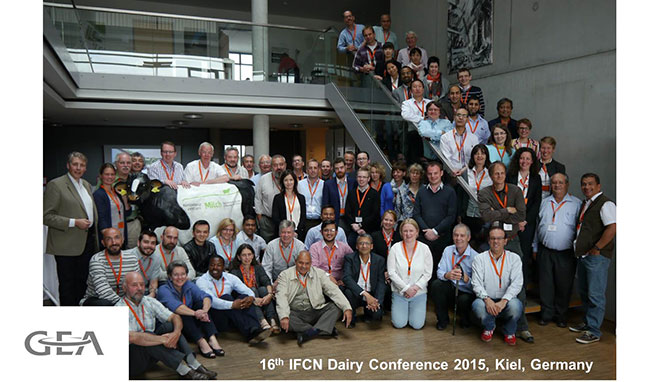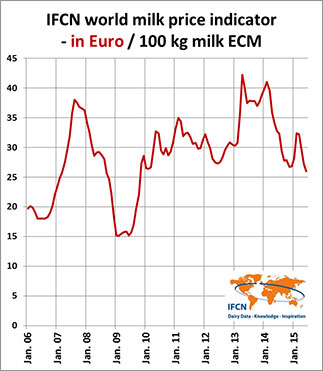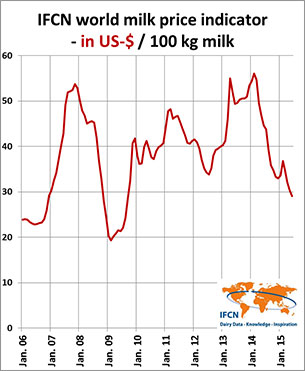
During the three day IFCN Dairy Conference in Kiel, Germany, milk experts from 45 countries gathered to discuss the global status and perspectives of milk production and milk prices.
 Current hot topic within the dairy industry is the present record low milk price. Torsten Hemme, CEO of IFCN and host of the conference, stated in his welcome speech: "The world milk price fell below 0.30 USD (i.e. 0.26 EUR)/ per kg of milk (June 2015). This means, we are facing the 3rd crisis within only 8 years. This affects the milk production in every country in the world."
Current hot topic within the dairy industry is the present record low milk price. Torsten Hemme, CEO of IFCN and host of the conference, stated in his welcome speech: "The world milk price fell below 0.30 USD (i.e. 0.26 EUR)/ per kg of milk (June 2015). This means, we are facing the 3rd crisis within only 8 years. This affects the milk production in every country in the world." 
Key reason for this severe decline of milk prices is the imbalance of world milk supply and demand in 2014. Right now, good weather conditions and also the fact of EU quota removal have pushed milk supply despite low prices. The import ban in Russia and China and market psychology factors play a significant role as well.
Dairy farm economics 2014 and 2015
Milk producers of most countries benefitted from good dairy farm economic conditions in the year 2014. Milk prices were high and feed prices low. However, the new IFCN Real Time Farm Economics tool indicates decreased farm profitability in 2015. Especially in countries where the national milk price closely follows the world market, farm profitability has already now reached a critical level.
"For me as a researcher, these key findings are of very high value. I need the IFCN network and the data to serve the dairy industry in my country. With the information on profitability and perspectives, we can prepare our dairy market for the future and ensure a sustainable milk production", commented an IFCN network member from the Netherlands.
118 million dairy farms world-wide in 2014
Based on the IFCN Country Profile collection of more than 100 countries, there are currently 118 million dairy farms in the world. On average, a farm keeps 2.9 cows with an average milk yield of 2.2 t / cow and year. In the past (data from 1996 2013), the number of dairy farms increased constantly. This trend has changed now. "Looking backwards, the increase in milk supply was realised by an increasing number of dairy farms and dairy cows. Now, on global level, the trend follows mostly the developed countries. In those countries, farm number has significantly decreased, while national milk production is on the same level. This level can only be reached by an increased herd size and increased milk yield", explained Anders Fagerberg, chairman of the IFCN board, to the audience.


After three intense days of information and discussions about the dairy world, the researchers returned to their home countries. Next year, the network will meet in Belgium again. What will happen on the international dairy market until then?
This event was sponsored by GEA.
7.2.2015